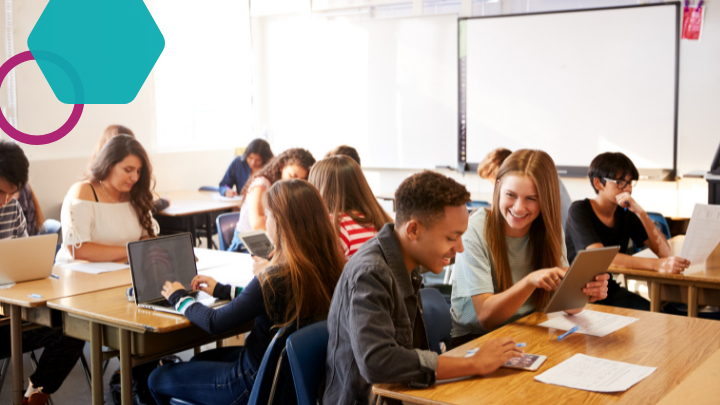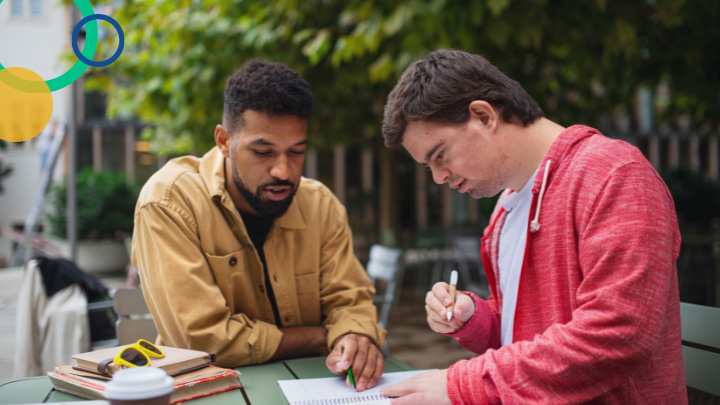This blog is the first in a series that highlights the work of the Meeting the Needs of All Learners Master Teacher Project. Each author is an experienced educator from the Kansas City area with deep expertise in differentiation and working with students with disabilities and English Learners.
Time.
Time is considered a special commodity among teachers, which we try to maximize as much as possible. So when considering modifications for students with disabilities or English Language Learners, we might question using our precious time for just a few students. In reality, the modifications that we make for students with different needs could benefit the learning of every student in your class. Taking the time to make modifications helps you to prioritize what you truly want students to learn and helps all students successfully reach learning targets.
When I first started making modifications, I found myself spending more time on prep. However this quickly became easier, and I soon saw results in my classroom. I was expecting a unit about the Revolutionary War to take more time to teach, but all my students were able to grasp the key ideas because they were working at their independent level for success. We were able to move more quickly through the material, which allowed for deeper and more meaningful conversations as a whole class.
Here are some areas where modifications will lead to the success of all students.
Reading Modifications
Build the Foundations
One of my favorite strategies for teaching the foundations of reading is Tap It Out. Tap It Out is a strategy in which you use your fingers to tap each sound in a word to help students with phonemic awareness and decoding. This strategy is especially helpful with dyslexia or other reading difficulties. However, I use this strategy with all of my students, and I can see that each student grasps the necessary knowledge and routine that increases their ability to decode and encode.
Build Background Knowledge
Building Background Knowledge through Text Sets is a strategy that requires some pre-planning. Teachers must first identify which topics might be unfamiliar to students who don’t have the necessary background knowledge based on their disability or cultural differences. However, all our students come to us with different lived experiences and interests, so curating a text set to introduce a topic before diving deep into the learning allows all students to build a schema to connect to later on in their learning.
One of my favorite examples of the universal benefit of text sets came from a young man in one of my reading groups. I had created a text set with the intention of assisting a couple of students with disabilities in the group, however, this particular student became really engaged and excited by the topic. When we started digging deeper into the actual learning he was motivated, incredibly insightful, and encouraged all his group mates throughout the learning. He felt like a success and this, in turn, helped the other group members feel successful.
Personalization
Place Assignments into Tiers
Tiering assignments is another way to address the needs of students with disabilities and English Learners that also helps all students. When assignments are tiered, students are able to access information in different levels and forms, which increases their motivation and belief that they can succeed. Three teachers from the “Meeting the Needs of All Learners” Master Teacher Project have written strategies to help with tiering:
- Tiering Assignments and Assessments in Math
- Tiered Activities for Upper Elementary Students
- Tiered Activities for Early Elementary English Learners
Technology
Audio Recordings
Often strategies that meet the needs of students with disabilities include auditory recordings of text. Digital Worksheets with Video Directions demonstrates this type of strategy. The benefit to all students comes from taking the cognitive load off of comprehending directions. This allows for students who find it easier to listen to directions to access that information, but keep their minds focused on the analysis of the content or the learning that needs to take place.
Using Visuals
Another strategy that is often used for English Learners is utilizing visuals. Strategies like Visual Retellings and Shades of Meaning are very helpful for English Learners. However, this same idea could benefit many students who find they learn better through visuals either as photos, graphics, diagrams, illustrations, etc. It can also help all students make those neural connections to other ideas.
In Summary
What we as teachers discover in the end is those modifications that make learning accessible for students with disabilities or English Language Learners lead to enhanced learning for all students. Taking the time to make those modifications will lead more students to success with learning targets and maybe even less time re-teaching.
Explore Rebecca’s strategies and more on the Meeting the Needs of All Learners Master Teacher Project. Read the second post in this series: Science for all students, bringing the ocean and wind to the classroom.







